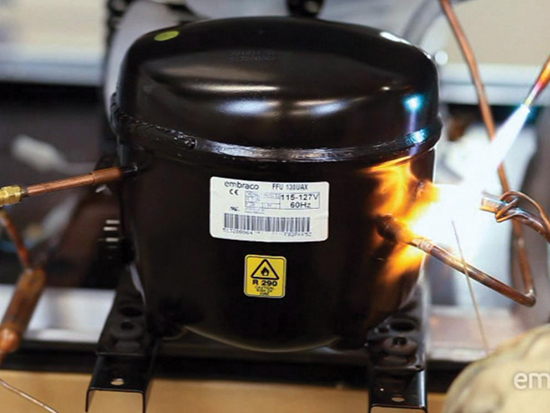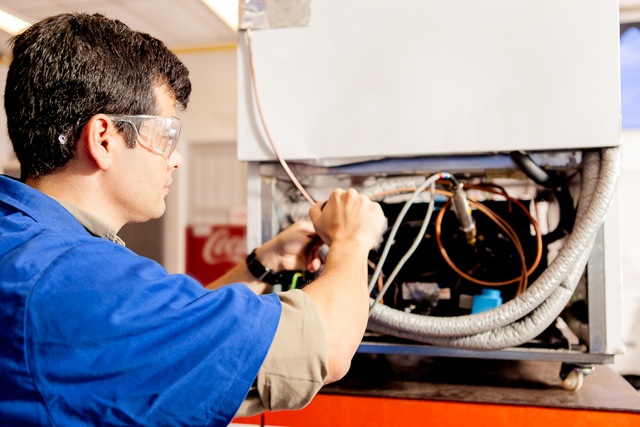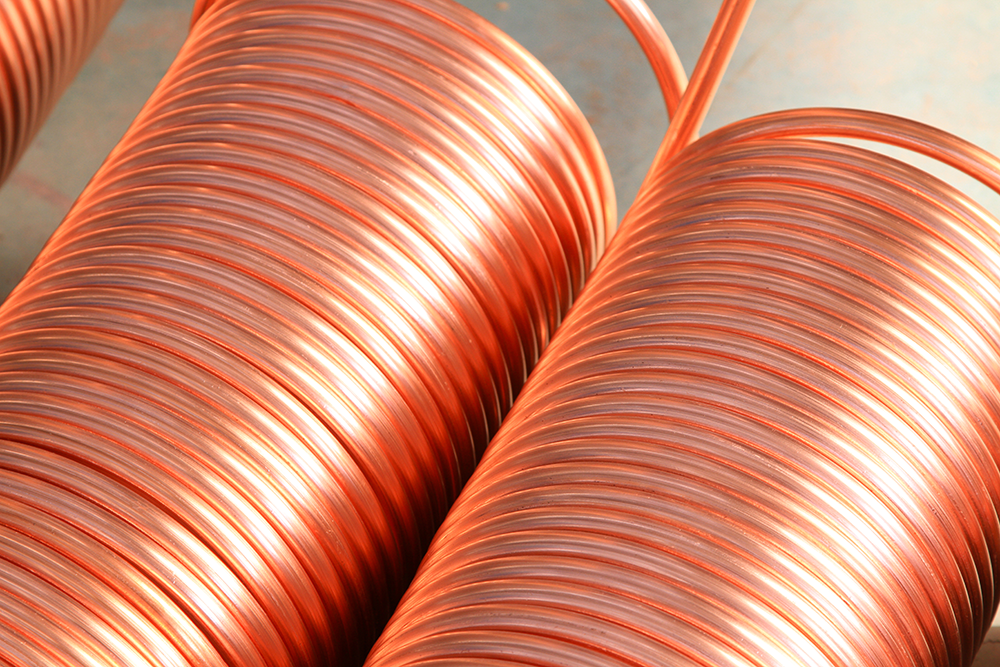Understand the causes and learn how to avoid leakages of cooling fluids.
Leakages of cooling fluids are problems which need to be avoided. Indeed, they result into financial losses, as it is necessary to repair and replace the fluid leaked.
At the same time, in many cases, they result into serious environmental damages: CFCs, HCFCs and HFCs, when they leake into the atmosphere, generate significant impacts on the ozone layer and contribute to the global warming.
Regular preventive maintenance aids in avoiding leakages or identify them when they start, minimizing the damages.
Some of the main signs that gas is leaking are:
• Loss of performance of the appliance
• Presence of humidity in the compressor;
• Presence of oil around a fitting.
In household systems, a small loss already impairs the appliance. In the case of natural refrigerants (such as R600a), the impact of any leakage is even greater, as the gas load is reduced, compromising the performance.
While in commercial cooling systems, , due to the greater fluid load, small leakages sometimes take longer to be perceived. That is why these systems require greater attention of the technicians and owners of the establishments where they are installed. This preventive action is even more important because the leakage has direct financial besides the cost of the replacement fluid, it is also necessary to pay the technician Product stored in the appliance can also be damaging due to the leakage and/or maintenance.
Several studies made in Brazil show that many supermarkets focus only in reloading the appliance with the fluid, without looking for the causes responsible for the leakage.
It is necessary to emphasize that this reload of the appliances should not be done before finding the the causes of leakage and repairing the system, avoiding future leakages. This incorrect practice results into unnecessary expenses and generates an environmental impact for the ozone layer and global warming. Keep it in mind and guide your customers: it is no good inserting more cooling fluid without eliminating the cause of the problem, as it might result in a new leakage!
The causes
The reasons that leakages occur are very diverse in household refrigerators, often they originate in the usage of piercing instruments (such as knives or screwdrivers) to remove the accumulated ice. This is a practice not recommended – and the manuals of the equipment highlight this –, but many people still do so, causing damage to the evaporator. Upon finding that this was the cause, the technician should guide his customer not do it again.
Excess vibration or fatigue of the materials can result into micro-cracks, both for commercial and household applications, which usually are not visible to the naked eye. The same occurs with very intense handling of the equipment, both in its normal use (especially in operations in places such as supermarkets) and in transportation. The micro-leakages which occur in these cases can be difficult to locate, which sometimes causes the scrapping of the equipment. This makes it even more important to adopt preventive measures to avoid these problems.
The check of possible leakages must be careful, especially emphasizing the places where they occur most frequently:
• Couplings and fittings along the piping, such as nuts and flanges, as well as fastening points;
• Welding points (due to welding process errors or by the usage of inappropriate welding material);
• Points of curvature of the piping (the piping is thinner at the place of the bend, which can generate small cracks when the equipment is transported or when it undergoes mechanical impacts);
• Evaporators and condensers.
Leakages also occur when the Schrader valve is left connected in the system. It is an important tip to be taken into account!
Another essential recommendation is to pay attention to the cooling fluid while performing f maintenance and repairs (which includes changing the compressor), avoiding its leaking.
How to detect leakages
The most traditional and best-known method to identify leakages of cooling fluids is the bubble test, during which water with soap is placed on the suspected area: if bubbles are formed, it is it is a signal of leakage. It is a simple way of checking for leakages, which does not involve any technology and financial costs, but that usually has a good precision, especially when it is not a micro-leakage
A similar test is the immersion test, that consists of dipping the suspected part or component in water, where the occurrence of bubbles indicates the existence of a hole, split or crack.
The liquids detecting leaks are an evolution of these methods, also following the principle of forming bubbles.
More recently, more modern methods were developed, which indicate with greater accuracy the existence of problems which lead to leakages of cooling fluids.
An example is the fluorescent dyes, which are not visible in normal light, but only with ultraviolet light (UV). Generally speaking, they are placed in the compressor lubricating oil when any maintenance is done in the system. The leakage is confirmed if any fluid/oil with dye has escaped from the system, which can be seen with UV light.
There are also several models of electronic leakage detectors. They are endowed with sensors and usually have a LED display to indicate leakages. They can be classified into three types:
• Non-Selective Detectors: they detect any type of emission or vapor, regardless of its chemical composition.
• Halogen Selective Detectors: they incorporate a special sensor which allows the user to detect the presence of elements such as fluorine, chlorine, bromine and iodine. Thus, they detect possible leakages of cooling fluids such as CFCs, HCFCs and HFCs.
• Specific Detectors for Compounds: they are the most sophisticated models as well as the most expensive ones. They are able to identify the presence of a single compound. They have greater accuracy in identifying leakages of CFCs, HCFCs and HFCs.
Specific care with hydrocarbons
As they are inflammable, hydrocarbons (R290 and R600a) can generate concern for technicians if there are leakages. Let us remember once more that hydrocarbons usage is safe and it is sufficing to take some basic care in order to assure its safety.
First, before beginning the service in appliances with R290 or R600a, ensure that there are no sources of ignition nearby the appliance and that it is well ventilated. By precaution, have a fire extinguisher nearby.
The use of leakage detector for hydrocarbons is also advisable and, as these fluids are heavier than air, the detector shall be maintained at a low height.
If it is necessary to weld piping to correct the leakage, it is essential to ensure that the piping is totally free of isobutane or propane.
The blowtorch shall only be used after the total removal of the hydrocarbons, , so that there are no risks. An important measure is to pass a load of nitrogen in the piping, to remove all the remaining inflammable cooling fluid.
Instead of welding, one can also choose, with total safety, to use the Lokring system, which avoids the necessity of a blowtorch.
Another important tip, if replacing the compressor: the isobutane or propane of the system can be collected in a closed container. As opposed to other substances, the hydrocarbons can also be released in a well-ventilated environment. There are no problems with this, as they do not cause damage to the ozone layer or have a significant impact on global warming.
Read more about R290 and R600a hydrocarbons by clicking here.



